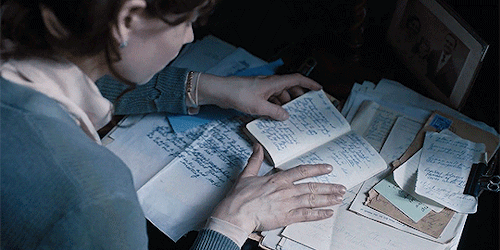Writing an epilogue is an essential part of crafting a compelling story.
It provides closure, wraps up loose ends, and leaves a lasting impact on your readers.
Whether you’re working on a novel, a screenplay, or any other form of storytelling, mastering the art of writing an epilogue can take your work to the next level.
In this article, we’ll guide you through eight easy steps to help you create a memorable epilogue that resonates with your audience.
Step 1: Reflect on the Main Storyline
Before diving into writing your epilogue, take a moment to reflect on the main storyline of your narrative.
Consider the major plot points, character arcs, and themes that have unfolded throughout your work.
This reflection will help you identify the key elements you want to address or tie up in your epilogue.
Step 2: Determine the Timeframe
Decide on the timeframe for your epilogue.
Will it take place immediately after the main events of the story, or will it jump ahead in time?
Consider what will be most impactful for your readers and aligns with the tone and pace of your narrative.
Step 3: Establish the Epilogue’s Purpose
Clarify the purpose of your epilogue.
Are you aiming to provide closure, offer a glimpse into the characters’ future, or deliver a final thought on the story’s themes?
Understanding the purpose will guide your writing and ensure the epilogue serves its intended function effectively.
Step 4: Select the Point of View
Choose the point of view from which you’ll narrate the epilogue.
It can be the same as the main story or a different perspective, depending on what adds depth and meaning to your epilogue.
Consider the impact of the chosen viewpoint on the readers’ emotional connection to the characters and events.
Step 5: Tie Up Loose Ends
One of the primary functions of an epilogue is to tie up loose ends and provide resolution.
Address any unresolved plot points or character conflicts that are crucial to the readers’ understanding and satisfaction.
Avoid introducing new conflicts or unresolved elements, as this may leave your audience feeling unsatisfied.
Step 6: Offer Character Closure
Delve into the emotional journey of your characters. Show how they have evolved and grown since the main events of the story.
Provide a sense of closure for their individual arcs, highlighting the lessons they’ve learned or the transformations they’ve undergone.
This allows readers to see the lasting impact of the story on the characters’ lives.
Step 7: Create an Emotional Impact
Craft your epilogue with the aim of leaving an emotional impact on your readers.
Engage their senses and evoke the feelings you want them to experience.
Consider using vivid descriptions, poignant dialogue, or introspective reflections to enhance the emotional resonance of your epilogue.
Step 8: Reflect on the Themes
Finally, reflect on the overarching themes of your story.
Use the epilogue as an opportunity to revisit these themes and offer final insights or reflections.
Reinforce the core messages of your narrative, leaving readers with a lasting impression of the story’s significance.
Here are a few examples of well-crafted epilogues from famous works of literature:
Harry Potter and the Deathly Hallows by J.K. Rowling
The epilogue of the final Harry Potter book is set 19 years after the main events.
It offers a glimpse into the future lives of the characters, showing them as adults with families of their own.
This epilogue provides closure, reveals the characters’ ultimate destinies, and leaves readers with a sense of hope and fulfillment.
The Lord of the Rings: The Return of the King by J.R.R. Tolkien
In the epilogue of this epic fantasy trilogy, Tolkien provides a detailed account of the characters’ lives following the War of the Ring.
He explores their struggles to adapt to a peaceful world and depicts their final departures to the Undying Lands.
This epilogue beautifully concludes the story, tying up loose ends, and emphasizing the bittersweet nature of the characters’ journeys.
Pride and Prejudice by Jane Austen
Austen’s novel concludes with an epilogue that offers a glimpse into the futures of the main characters.
It reveals the marriages and happiness that follow the resolution of misunderstandings and societal pressures.
This epilogue reinforces the themes of love, personal growth, and societal expectations, providing a satisfying conclusion to the story.
Remember, these examples demonstrate the effectiveness of epilogues in providing closure, resolving storylines, offering glimpses into the characters’ futures, and reinforcing the overarching themes of the narrative.
Each epilogue is tailored to the specific tone and style of the work, leaving a lasting impact on the audience.
An Epilogue Requires Careful Consideration
Writing an epilogue requires careful consideration of the main storyline, purpose, and characters of your narrative.
By following these eight easy steps, you can create a compelling epilogue that provides closure, resolves loose ends, and leaves a powerful emotional impact on your readers.
Remember to reflect on the story, determine the timeframe, establish the purpose, select the point of view, tie up loose ends, offer character closure, create an emotional impact, and reflect on the themes.
With practice and dedication, your epilogues will become a noteworthy conclusion to your stories.








